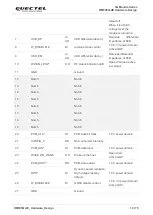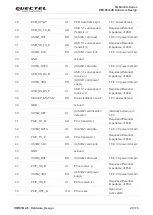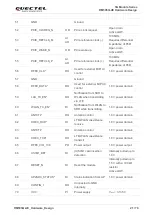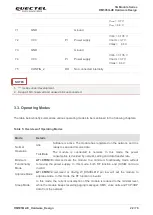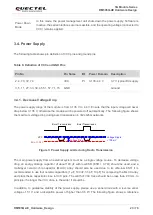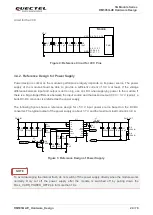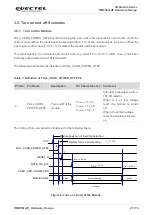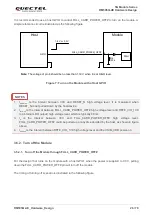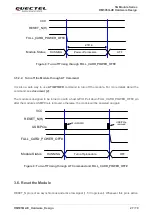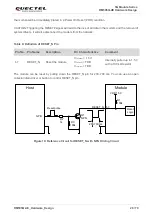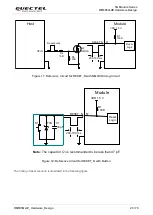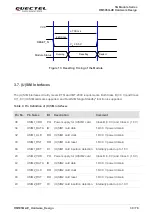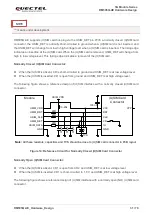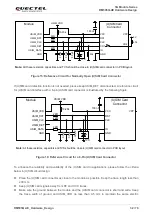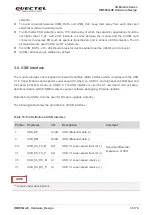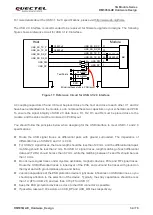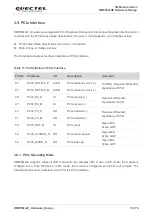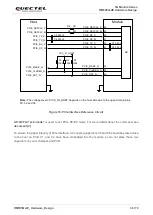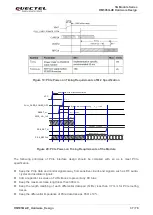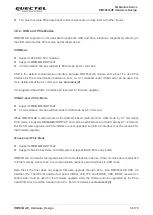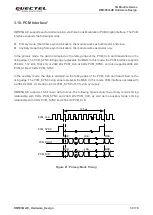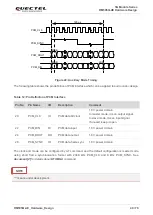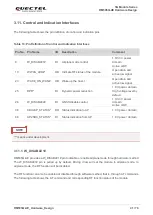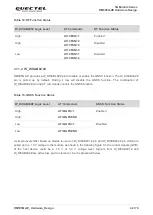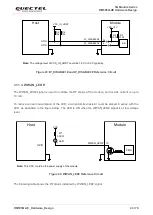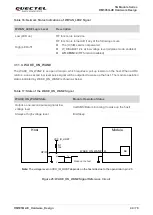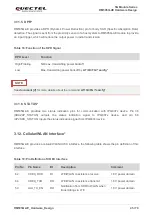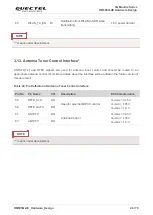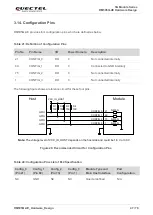
5G Module Series
RM505Q-AE Hardware Design
RM505Q-AE_Hardware_Design 33 / 79
potential.
⚫
To avoid cross-talk between USIM_DATA and USIM_CLK, keep them away from each other and
shield them with surrounded ground.
⚫
To offer better ESD protection, add a TVS diode array of which the parasitic capacitance should be
not higher than 10 pF. Add 22
Ω resistors in series between the module and the (U)SIM card
connector to suppress EMI such as spurious transmission, and to enhance ESD protection. The 33
pF capacitors are used to filter out RF interference.
⚫
For USIM_DATA, a 10
–20 kΩ pull-up resistor must be added near the (U)SIM card connector.
⚫
(U)SIM card hot-plug is disabled by default.
3.8. USB Interface
The module provides one integrated Universal Serial Bus (USB) interface which complies with the USB
3.1/2.0 specifications and supports super speed (10 Gbps) on USB 3.1 and high speed (480 Mbps) and
full speed (12 Mbps) modes on USB 2.0. The USB interface is used for AT command communication,
data transmission, GNSS NMEA sentence output, software debugging, firmware upgrade.
Note that only USB 2.0 can be used for firmware upgrade currently.
The following table shows the pin definition of USB interface.
Table 10: Pin Definition of USB Interface
“*” means under development.
Pin No. Pin Name
I/O
Description
Comment
7
USB_DP
AI/AO
USB differential data (+)
Requires differential
impedance of 90
Ω
9
USB_DM
AI/AO
USB differential data (-)
29
USB_SS_TX_M
AO
USB 3.1 super-speed transmit (-)
31
USB_SS_TX_P
AO
USB 3.1 super-speed transmit (+)
35
USB_SS_RX_M
AI
USB 3.1 super-speed receive (-)
37
USB_SS_RX_P
AI
USB 3.1 super-speed receive (+)
NOTE

